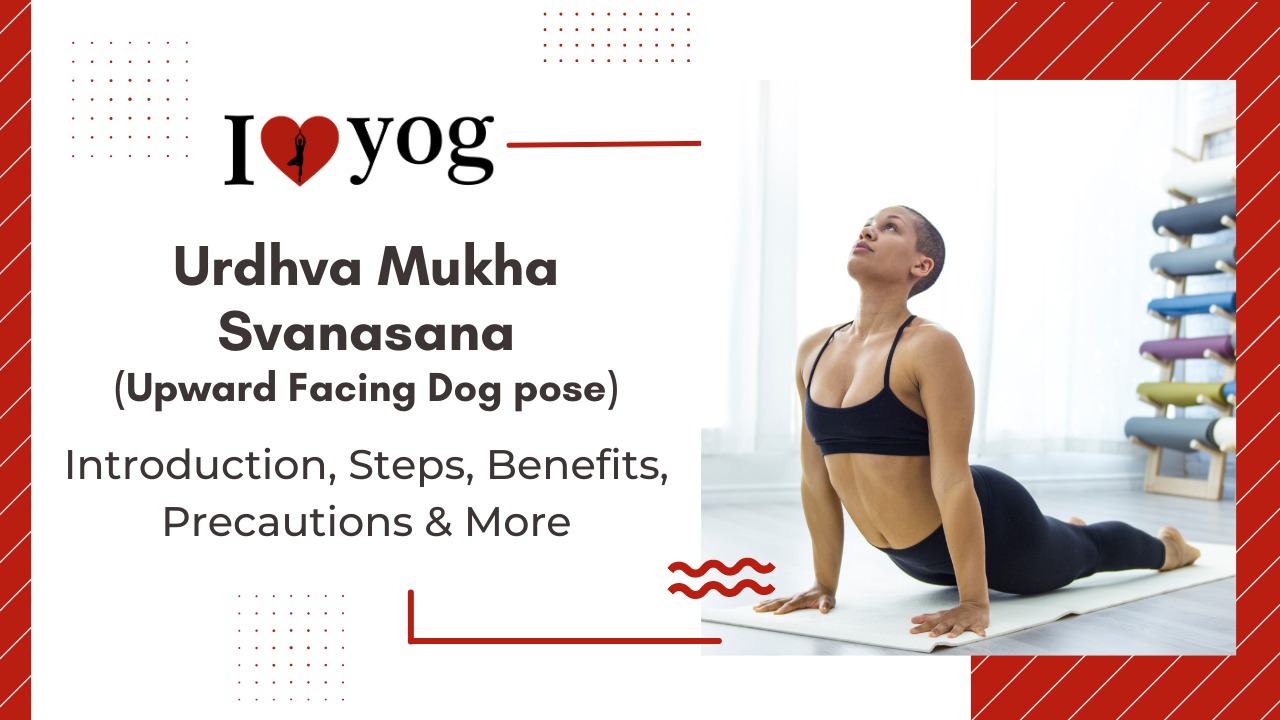What You Need to Know Prior to Performing Urdhva Mukha Svanasana?
The pose should be performed on an empty stomach in the morning.
Even if it is practiced in the evening or at any other time of day, the stomach should be empty, as should the bladder and bowel. If it is practiced at any time other than early in the morning, the practitioner should eat 4-6 hours before practice. This will ensure that the stomach is empty by the time the individual assumes the posture, and the energy obtained from the food will aid in performing the pose with ease.
Preparatory Poses
- Bhujangasana (Cobra Pose)
- Setu Bandha Sarvangasana (Bridge Pose)
- Sphinx Pose
- Dhanurasana (Bow Pose)
- Yogasana Level – Beginner
- Yogasana Style –
- Yogasana Repetitions – after 1 min
- Yogasana Strengthens – Spine, Arm, Wrist
Urdhva Mukha Svanasana’s Effect on Tri Dosha
Urdhva Mukha Svanasana regulates Udana Vayu and Vyana Vayu, thereby aiding in the opening of the chest and ribs, promoting easy breathing, oxygenation, and circulation, and aiding in the treatment of asthma, weariness, and depression. By harmonizing various Vayu subtypes, the asana helps provide energy, enthusiasm, the ability to articulate oneself, and a good memory. In addition, this asana has a relaxing and balancing impact on the Anahata and Vishuddha Chakras.
By balancing Samana Vayu and Pachaka Pitta, this asana promotes healthy digestion. This also occurs because this asana has a relaxing and balancing impact on the Manipura Chakra.
How to Perform the Upward-Facing Dog Yoga Asana?
- Lie on your stomach with the tops of your feet pointing downward. Extend your arms down your body’s sides.
- Bend your elbows and place your palms next to your lowest rib.
- While inhaling, press your palms firmly on the mat and slowly lift your chest, hips, and knees off the mat. Your entire body weight should be supported by your hands and the tops of your feet.
- You may stare straight ahead or slightly tilt your head upwards.
- Ensure that your wrists and shoulders are aligned and that your neck is not strained.
- Maintain the position for five to ten breaths.
- Slowly lower your knees, hips, and body back to the mat as you exhale.
What Are The Advantages Of The Upward Dog Yoga Posture/Asana?
- – Strengthens and stretches the back
- – Relieves lower backache
- – Strengthens the wrists and arms
What Are The Contraindications And Precautions For Upward-Facing Dog Pose/Asana?
- – Back injury
- – Pregnancy
- – Carpal Tunnel Syndrome
- – Weak joints and muscle
What Is the Science Behind the Upward Dog Posture/Asana?
Upward-facing dog, also known as Urdhva Mukha Svanasana, is a back-bending, prone yoga pose. This difficult posture is a traditional part of the Surya Namaskar series (sun salutations) and a transitional pose in a Vinyasa yoga practise, coming after Chaturanga Dandasana and before Adho Mukha Svanasana (downward-facing dog). In upward dog, you place your weight on your hands and elevate your knees off the yoga mat as your chest pulls forward through your shoulders, causing your low back to bend deeply.
Beginner Tips For Upward Facing Dog Posture/Asana?
- If you find it difficult to maintain weight through your arms, consider adjusting the angle of the posture to place more weight in your legs. Place yoga blocks or even a chair seat beneath the palms.
Advanced Changes in Pose
- Upward Facing Dog Pose Blocks Under Palm
- Upward Facing Dog Pose With Chair
Related Yoga Poses/Asanas:
Counter poses
- Balasana (Child’s Pose)
- Adho Mukha Svanasana (Downward-Facing Dog)
Reference:


